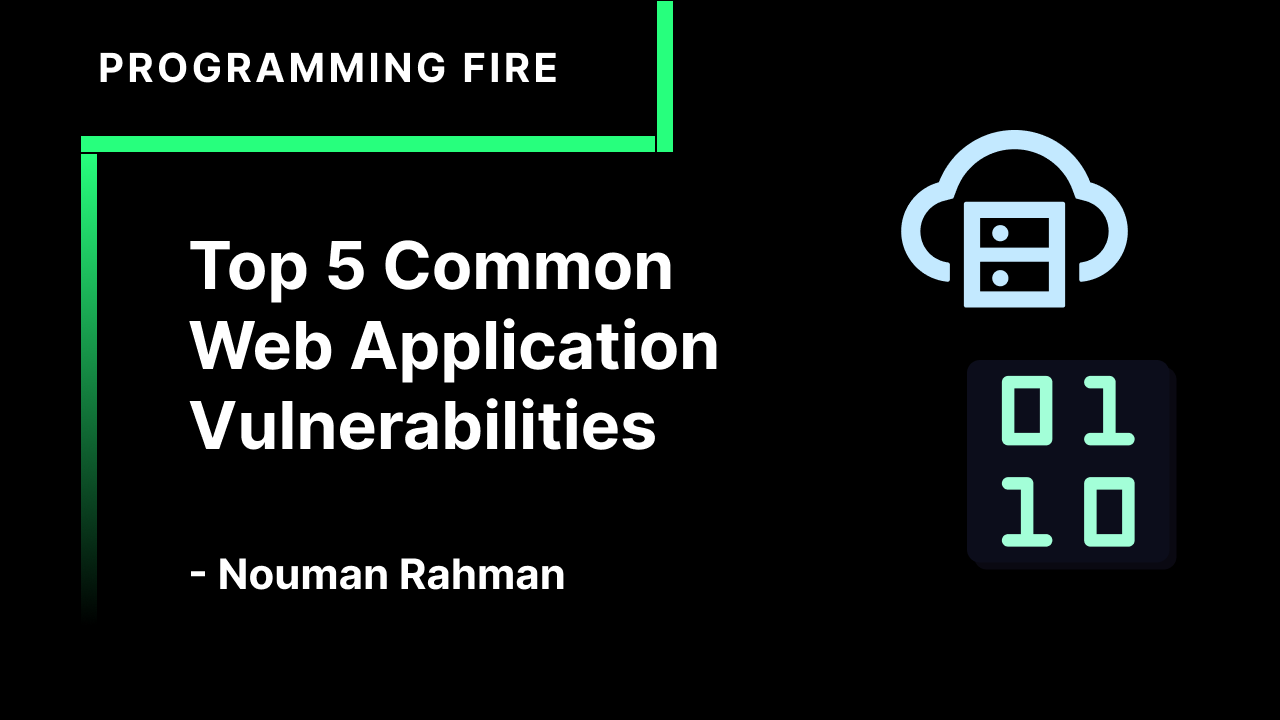Top 5 Common Web Application Vulnerabilities
 Nouman Rahman
Nouman Rahman
Web application attacks are involved in 26% of all breaches, and app security is a concern for enterprises. The size of a startup does not exempt it from cyber-attacks – that's because hackers constantly scan the internet looking for flaws. It takes many years to build a reputation as a startup – and this can be ruined overnight with a single flaw.
Web applications, often in the form of Software as a Service (SaaS), are now the cornerstone for businesses all over the world. SaaS solutions have revolutionized the way they operate and deliver services, and are essential tools in nearly every industry, from finance and banking to healthcare and education.
Most startup CTOs have an excellent understanding of how to build highly functional SaaS businesses but (as they are not cyber security professionals) need to gain more knowledge of how to secure the web application that underpins it.
Why test your web applications?
If you are a CTO at a SaaS startup, you are probably already aware that just because you are small doesn't mean you're not on the firing line. The size of a startup does not exempt it from cyber-attacks – that's because hackers constantly scan the internet looking for flaws that they can exploit. Additionally, it takes only one weakness, and your customer data could end up on the internet. It takes many years to build a reputation as a startup – and this can be ruined overnight with a single flaw.
According to recent research from Verizon, web application attacks are involved in 26% of all breaches, and app security is a concern for ¾ of enterprises. This a good reminder that you can't afford to ignore web application security if you want to keep your customer data secure.
For startups as well as enterprises
Hacking is increasingly automated and indiscriminate, so startups are just as vulnerable to attack as large enterprises. But no matter where you are on your cybersecurity journey, securing your web apps doesn't need to be difficult. It helps to have a bit of background knowledge, so here's our essential guide to kick-start your web app security testing.
What are the common vulnerabilities?
1 — SQL injection
Where attackers exploit vulnerabilities to execute malicious code in your database, potentially stealing or dumping all your data and accessing everything else on your internal systems by backdooring the server.
2 — XSS (cross-site scripting)
This is where hackers can target the application's users and enable them to carry out attacks such as installing trojans and keyloggers, taking over user accounts, carrying out phishing campaigns, or identity theft, especially when used with social engineering.
3 — Path traversal
These allow attackers to read files held on a system, allowing them to read source code, sensitive protected system files, and capture credentials held within configuration files, and can even lead to remote code execution. The impact can range from malware execution to an attacker gaining full control of a compromised machine.
4 — Broken authentication
This is an umbrella term for weaknesses in session management and credential management, where attackers masquerade as a user and use hijacked session IDs or stolen login credentials to access user accounts and use their permissions to exploit web app vulnerabilities.
5 — Security misconfiguration
These vulnerabilities can include unpatched flaws, expired pages, unprotected files or directories, outdated software, or running software in debug mode.
Subscribe to my newsletter
Read articles from Nouman Rahman directly inside your inbox. Subscribe to the newsletter, and don't miss out.
Written by

Nouman Rahman
Nouman Rahman
13 Years Old • Full-Stack Developer • Software Engineer • Rustacian • YouTuber • Blogger • TypeScript, Cloud, DevOps, Rust, Networking, Web